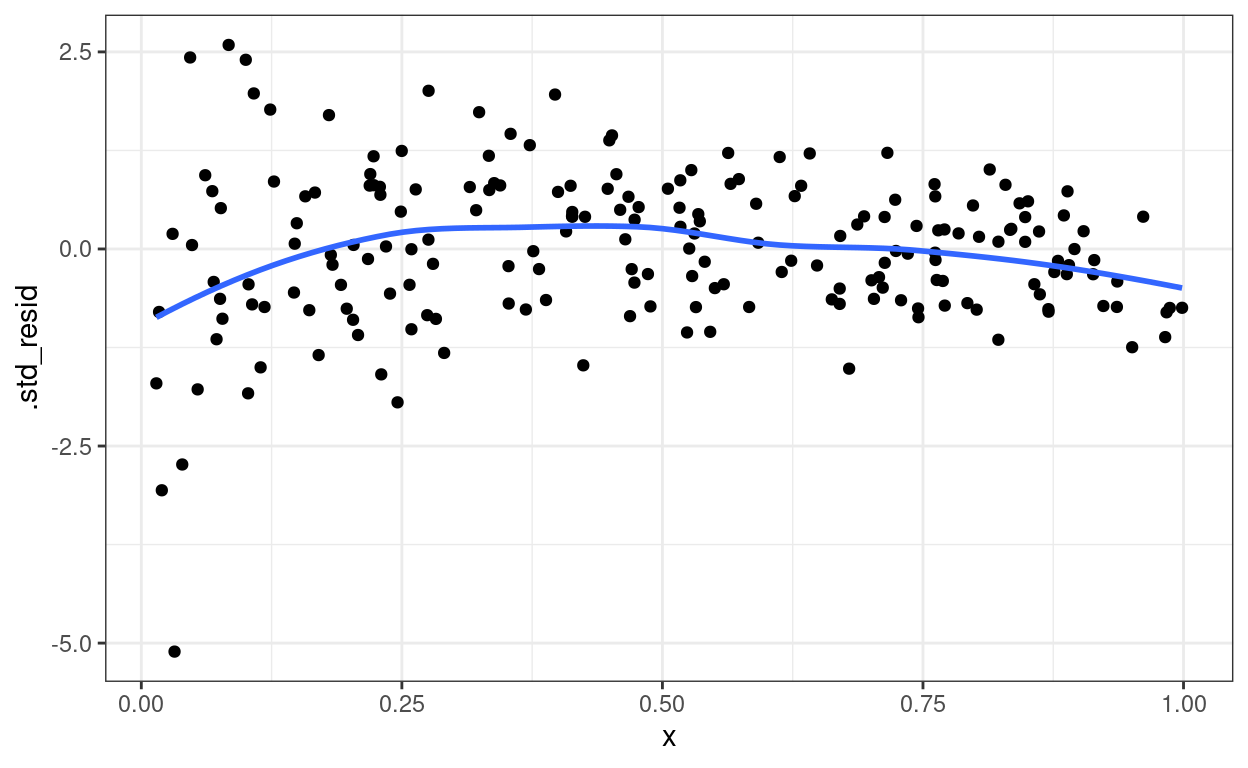Week Learning Objectives
By the end of this module, you will be able to
- Describe the major assumptions in basic multilevel models
- Conduct analyses to decide whether cluster means and random slopes should be included
- Use graphical tools to diagnose assumptions of linearity, homoscedasticity (equal variance), and normality
- Solve some basic convergence issues
- Report results of a multilevel analysis based on established guidelines
Task Lists
- Review the resources (lecture videos and slides)
- Complete the assigned readings
- Snijders & Bosker ch 10
- Meteyard & Davies (2020; to be shared on Slack)
- McCoach (2019 chapter) (USC SSO required)
- Attend the Thursday session and participate in the class exercise
- Complete Homework 6
Lecture
Slides
You can view and download the slides here: HTML PDF
Model Diagnostics
Check your learning: Homoscedasticity means
Assumptions of a Multilevel Model
Note: E(Y) can also be written as ˆY, the predicted value of Y based on the predictor values.
The linear model is also flexible as it can allow predictors that are
curvillinear terms, such as Y=b0+b1X1+b2X21, or Y=b0+b1log(X1), or more generally Y=b0+p∑ibif(x1,x2,…)
The second functional form in the slide, however, is a truly nonlinear function.
Check your learning: Which of the following is NOT a linear model?
Check your learning: What is implied when the model specifies that the variance of u0j is τ20?
Remember the “LINES”
Check your learning: What does “I” stand for?
Check your learning: What is shown in a marginal model plot?
Check your learning: Which assumption(s) are likely violated in the following plot?

Additional issues
- Outliers/influential observations
- Check coding error
- Don’t drop outliers unless you adjust the standard errors accordingly, or use robust models
- Reliability (e.g., α
coefficient)
- Reliability may be high at one level but low at another level
- See Lai (2021, doi: 10.1037/met0000287) for level-specific
reliability
- You can use the
multilevel_alpha()function from https://github.com/marklhc/mcfa_reliability_supp/blob/master/multilevel_alpha.R
- You can use the